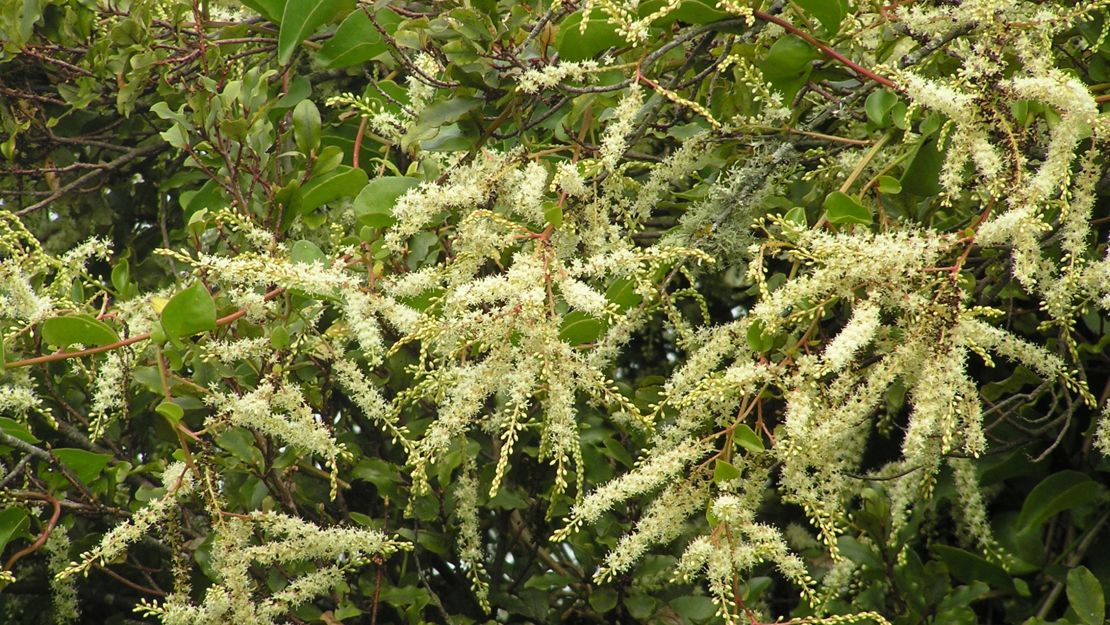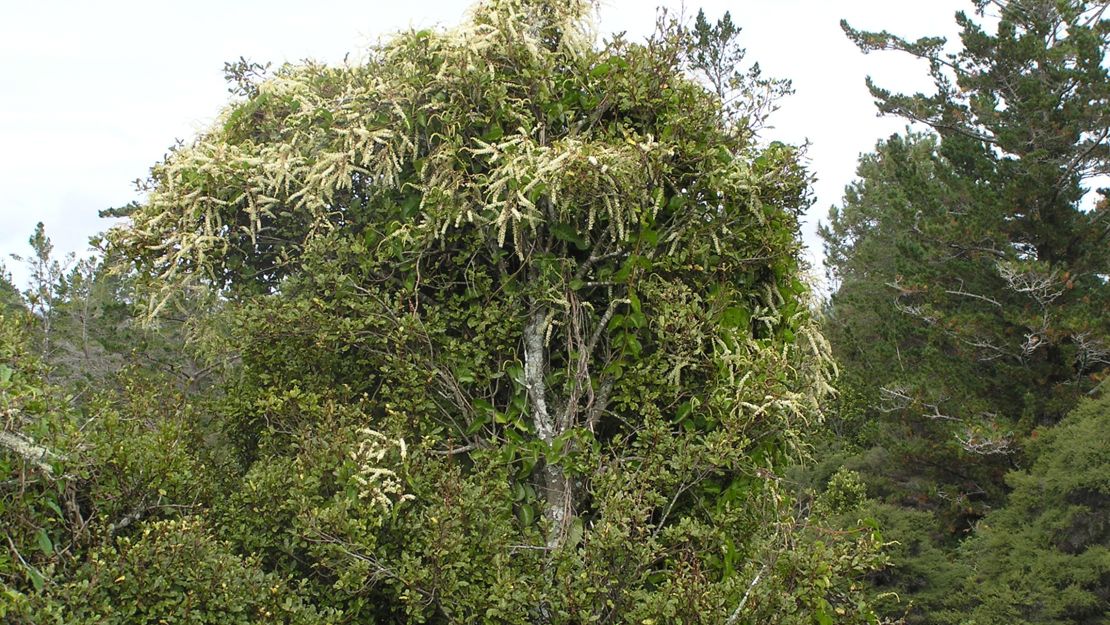Anredera cordifolia
Madeira vine
Also known as:
Madeira, mignonette vine, potato vine, lamb's tail
Family: Basellaceae
Origin: South America

Regional Pest Management Plan (RPMP) status
- Aotea — Progressive containment
- Parkland with Significant Ecological Areas — Site-led (on-park only)
- Whole region — Sustained control
- Waitākere Ranges Heritage Area priority status
- National Pest Plant Accord Species
General description
Perennial climbing vine < 40 m long. Rhizomes are fleshy. Stems are slender and reddish, with small, warty, aerial tubers. Leaves are < 11 x 10 cm, glossy, fleshy, oval or heart-shaped and alternate. Flowers are small, fragrant, cream and borne in drooping, slender inflorescences in January – April.
What you need to know
To help protect our environment:
- You must not breed, distribute, release or sell Madeira vine. As Madeira vine is a National Pest Plant Accord species, these restrictions apply within the Auckland region and across the whole of New Zealand.
- You must not plant Madeira vine within the Auckland region, unless you are transferring an existing plant on your land to another location within the boundaries of the same property.
- You must destroy any Madeira vine on land that you occupy if it has been planted in breach of the above rules and you are directed to do so by an authorised person.
Auckland Council will manage Madeira vine at all sites within the Aotea/Great Barrier Island group where it is known to occur.
If you see Madeira vine anywhere on Aotea/Great Barrier Island group, please report it to Auckland Council at pestfree@aucklandcouncil.govt.nz.
Auckland Council will manage Madeira vine in buffer areas of parks, where Madeira vine is being managed, to an extent that protects the values of that parkland. If you wish to help protect your local parkland, you are encouraged to control or remove any Madeira vine on your land and plant a better alternative instead.
View a map of park buffers.
To find out more about how we’re protecting Auckland’s parkland from pest plants, visit our pest plant buffer pages.
Habitats
Disturbed forest, forest margins, gullies, shrublands, coastline, dunes, riparian areas.
Dispersal
Vegetative spread from rhizomes, rhizome fragments and aerial and subterranean tubers, dispersed by water. Human-mediated dispersal through dumping of garden waste.
Impact on environment
Smothers and sometimes crushes understorey plants.
Control
Site Management
Cut and pull vines away from desirable trees and native plants before foliar spraying. Follow up treated areas 3 times per year. Encourage natural regeneration of native plants or replant treated areas where possible after 2-3 treatments to establish dense ground cover and minimise reinvasion.
Recommended approaches
Do not attempt to undertake control of this species on Aotea/Great Barrier Island group. Please report to Auckland Council if seen on Aotea/Great Barrier Island group.
Physical control
Method: Cut vines and leave upper stems to die in trees or dig out.
Plant parts requiring disposal: Rhizomes, aerial tubers and underground tubers.
Disposal options: Small amounts can be rotted in a covered water barrel or remove to greenwaste or landfill if practical.
Biocontrol
Biocontrol is currently not available for this species.
Community agrichemical control recommendations
No qualifications: Cut stump and paste freshly cut base of stems with metsulfuron gel.
Basic Growsafe certified: Cut stump and spray freshly cut base of stems with 1g metsulfuron-methyl per 1 L of water.
Certified Handler/Experienced agrichemical user: Foliar spray with 3g metsulfuron-methyl and 100ml glyphosate green per 10L of water and 20ml penetrant.
Caution: When using any herbicide or pesticide please read the label thoroughly to ensure that all instructions and safety requirements are followed.




